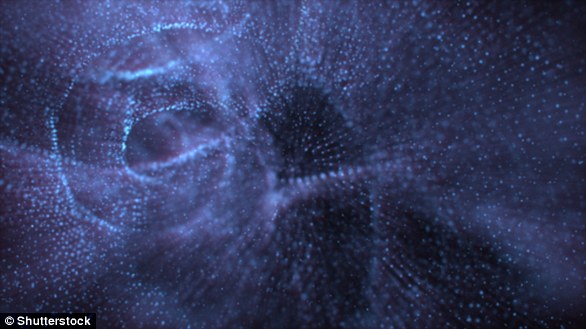See the universe like NEVER before as a stunning simulation of the cosmos is released – and it’s the biggest yet
Scientists have used the world’s fastest supercomputer to show the universe like it’s never been seen before.
In this incredible video, scientists from the Department of Energy’s Argonne National Laboratory unveil the largest computer simulation of the universe ever created.
The simulated area contains a whopping 311,296 cubic megaparsecs of space.
This allows you to see how huge clusters of galaxies come together over billions of years.
However, this stunningly large view only covers 0.001 percent of the entire simulation.
The results of that enormous calculation will allow scientists to investigate the evolution of the universe and the role of mysterious dark matter.
Project leader Dr. Salman Habib says: ‘There are two components in the universe: dark matter – which as far as we know only interacts by gravity – and conventional matter, or atomic matter.
“So if we want to know what the universe is up to, we have to simulate both things.”
Scientists have created the largest simulation of the universe ever, covering an area of 31 billion cubic megaparsecs
When astronomers look at distant galaxies through a powerful telescope like the James Webb Space Telescope, they can look back in time to the early days of the cosmos.
However, these images only give us snapshots of what the universe once looked like.
To get a true God’s perspective of creation, astronomers must create a so-called “hydrodynamic simulation.”
Rather than just simulating the pull of gravity between different pieces of matter, hydrodynamic simulations get as close as possible to the forces shaping cosmic evolution.
Dr. Habib says this requires scientists to simulate “gravity” as well as all other physics, including hot gas and the formation of stars, black holes and galaxies. The astrophysical ‘kitchen sink’, so to speak.”
The problem is that these types of simulations require enormous amounts of computing power to create.
To perform simulations at all, astronomers have typically eliminated all the other forces and factors that make hydrodynamic simulations so useful.
Dr. Habib says: ‘For example, if we were to simulate a large part of the universe being explored by one of the big telescopes like the Rubin Observatory in Chile, you are talking about huge chunks of time – billions of years of time. expansion.
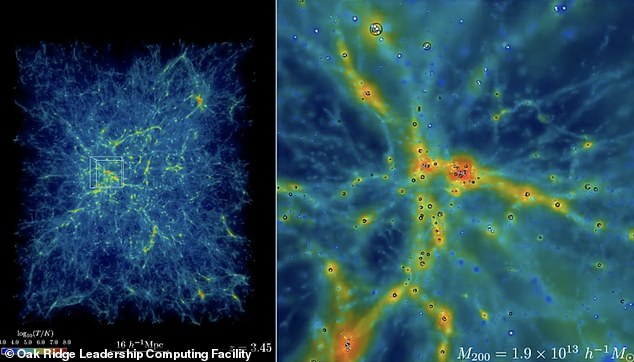
In this incredible video, watch a huge cluster of galaxies condense in the expanding universe. This mind-boggling snippet (photo) shows just 0.001 percent of the entire simulation
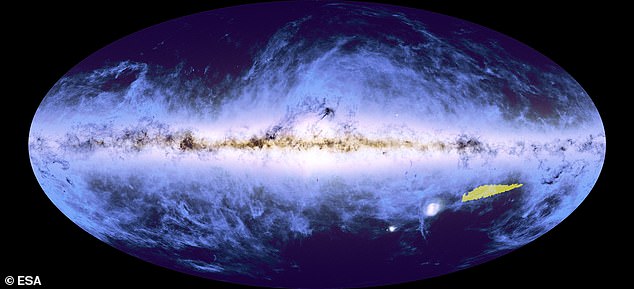
This new simulation is at a scale equivalent to the largest maps of the cosmos ever created, such as ESA’s Euclid cosmic atlas (pictured)
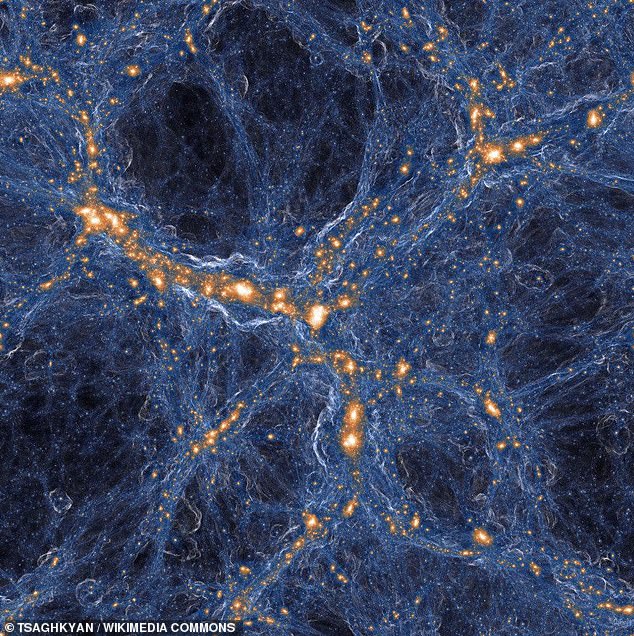
The simulation captures the formation of galactic filaments such as the Laniakea filament (illustrated) that contains hundreds of thousands of galaxies, including the Milky Way.
“Until recently, we couldn’t even imagine doing such a large simulation, except in a gravity-only approach.”
To overcome these problems, the researchers used Oak Ridge National Laboratory’s Frontier supercomputer.
Frontier is currently the most powerful supercomputer in the world, capable of performing more than a trillion or a billion billion calculations every second.
Even with such a fast computer, emulating the universe is not easy and it took well over a decade for scientists to refine and upgrade the code to run a hydrodynamic simulation on this scale.
Earlier this month, however, researchers were able to use Frontier’s 9,000 computer nodes to simulate a volume of the expanding universe of more than 31 billion cubic megaparsecs.
This is on a scale equivalent to the largest astronomical maps of the universe, made by the most powerful telescopes in the world.
Crucially, this simulation also includes the effects of the mysterious substance known as dark matter.
Dark matter is a theoretical type of particle that does not interact with the atoms and subatomic particles that make up the rest of the universe.
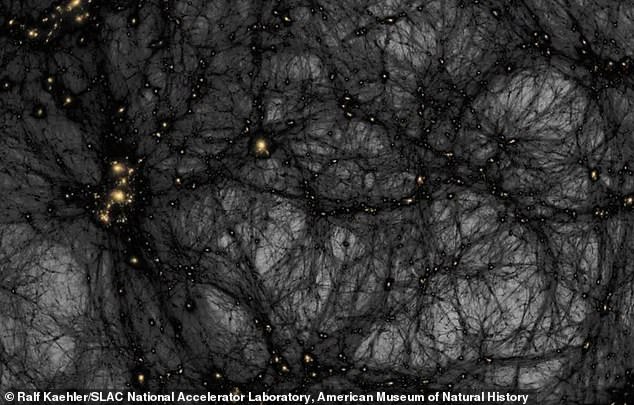
Crucially, this simulation also includes the effects of dark matter. This theoretical substance could create massive, unobservable structures between galaxies that would have given the universe the extra mass it needs to evolve into the shape we observe today. Pictured: A NASA simulation of the formation of dark matter structures in the early universe
The only way dark matter could affect the universe around it is by exerting gravity.
Scientists first proposed that this strange substance might exist to explain why the gravitational forces in the universe appear to be stronger than the mass of all galaxies should produce.
However, because we cannot observe dark matter in any way, simulations like this are crucial to understanding how it might have influenced the evolution of the cosmos.
The team hasn’t released any analysis based on the simulation yet, but we can expect some exciting revelations.

